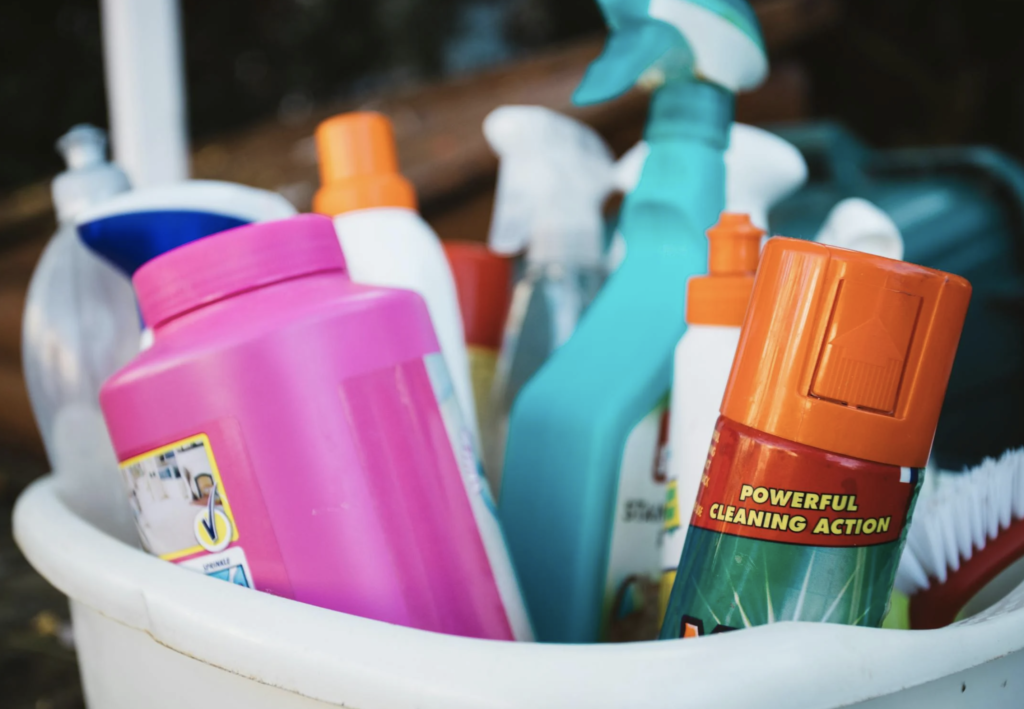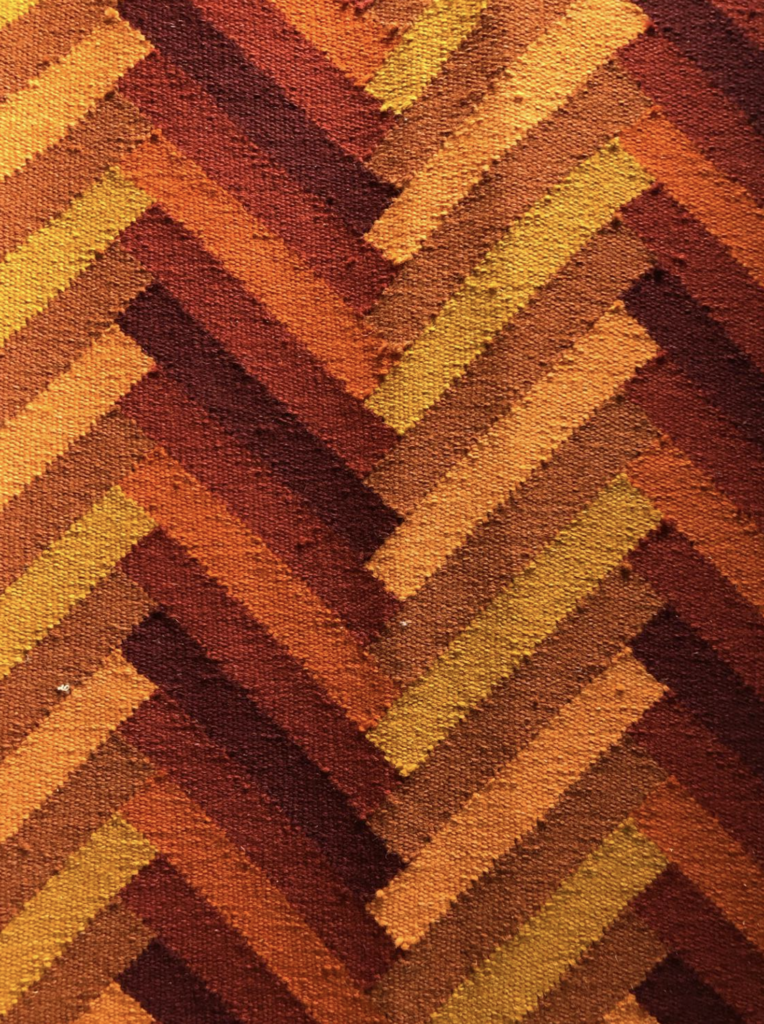Your sofa serves as a silent witness to life’s everyday adventures, from cherished vintage finds to treasured estate sale gems, you use them daily and it shows. Amidst the spills, crumbs, and pet hair, its allure can diminish over time. But fear not! Armed with the right tools and techniques, you can rejuvenate your couch and not think twice about where you lay your head down. Here’s an in-depth guide to cleaning couches.
Couch Care Essentials
Equip yourself with the following tools:
- Pet Hair + Lint Remover Brush
- Leather Cleaner + Conditioner Kit
- Portable Garment Steamer
Sofa Savvy Tips
- Keep a lint roller for quick de-linting.
- Treat leather sofas with soap and conditioner.
- Utilize steam to tackle dirt and stains on water-safe fabrics.

1. Vacuuming
Regular vacuuming may seem like a straightforward task, but its importance in maintaining the cleanliness and longevity of your sofa cannot be overstated. Many individuals underestimate the impact of routine vacuuming or simply forget to incorporate it into their cleaning regimen. Here’s why it’s crucial and how to do it effectively:
1. Consistency is Key: Establishing a routine for vacuuming your sofa is essential for keeping it free from debris, dirt, and allergens. Aim to vacuum your sofa at least once a week, or more frequently if it is subjected to heavy use or if you have pets. Consistent vacuuming not only keeps your sofa looking clean but also helps to prevent dirt and dust from settling deep into the fabric fibers.
2. Utilize the Right Tools: When vacuuming your sofa, make sure to use the appropriate attachments and tools for the job. The brush attachment is particularly useful for reaching into crevices and along seams, where dirt and debris tend to accumulate. This attachment effectively agitates the fabric, loosening embedded dirt and ensuring a thorough clean.
3. Pay Attention to Detachable Cushions: If your sofa has detachable cushions, take full advantage of this feature during your vacuuming routine. Remove the cushions and vacuum both sides thoroughly, paying special attention to areas where spills or crumbs may have collected. By vacuuming both sides of the cushions, you can ensure that no dirt or allergens are left behind, leaving your sofa fresh and clean from top to bottom.
4. Leave No Cushion Unturned: As you vacuum, be diligent in your efforts to cover every inch of the sofa’s surface. Move cushions, flip them over, and vacuum underneath to capture any hidden debris. Leaving no cushion unturned ensures a comprehensive cleaning and helps to maintain the overall hygiene of your sofa.
By prioritizing regular vacuuming and employing thorough techniques, you can effectively banish dirt, debris, and allergens from your sofa’s surface, promoting a cleaner and healthier living environment for you and your family.
2. Tackle Non-Fabric Parts
While it’s easy to focus solely on the fabric upholstery of your sofa, it’s important not to overlook the wood or metal components that make up its frame. These elements play a crucial role in the overall aesthetic and structural integrity of your furniture. Here’s how to give them the care and attention they deserve:
1. Gentle Cleaning Solution: Start by preparing a gentle cleaning solution using warm water and liquid dish soap. This mild yet effective solution will help to break down and lift away dirt, grime, and surface stains without causing any damage to the wood or metal surfaces.
2. Thorough Wiping: Using a soft cloth or sponge dampened with the cleaning solution, gently wipe down the wood or metal components of your sofa. Pay special attention to areas that are prone to accumulating dirt and fingerprints, such as armrests and legs. Take care to avoid oversaturating the wood, especially if it is unfinished or prone to water damage.
3. DIY Wood Cleaning and Polish: For stubborn stains or to give your wood components an extra shine, consider DIY wood cleaning and polish options. You can create a simple wood polish using ingredients like olive oil and lemon juice or vinegar. Apply the polish sparingly to the wood surface, using a clean cloth to buff it to a beautiful shine. Be sure to wipe away any excess polish to prevent buildup and streaking.
4. Microfiber Cloth Finish: After cleaning and polishing, use a microfiber cloth to wipe away any remaining residue and buff the wood or metal components to a high shine. Microfiber cloths are gentle yet effective at capturing and trapping dirt and debris, leaving surfaces clean and streak-free.
By incorporating these steps into your sofa cleaning routine, you can ensure that not only the fabric upholstery but also the wood or metal components of your furniture remain clean, shiny, and well-maintained for years to come.
3. Crack the Code: Fabric Identification
Decode the fabric tags to determine the optimal cleaning method:
- WS: Mild detergent with steam vacuum or dry-cleaning detergent.
- S: Dry cleaner detergent only.
- X: Vacuum only, avoid water.
- W: Water-based cleaning is safe.
4. Odor Obliteration
When it comes to banishing unwanted odors from your upholstery, natural solutions offer an effective and eco-friendly alternative. By tailoring your approach to the fabric type, you can effectively neutralize odors and restore freshness to your furniture. Here’s how to tackle odors using natural remedies:
1. Baking Soda Treatment: For a simple yet powerful solution, sprinkle baking soda generously over your sofa cushions. Baking soda works by absorbing and neutralizing odors, leaving your upholstery smelling fresh. Allow the baking soda to sit for some time to work its magic, then gently vacuum it up to remove both the powder and the odors it has absorbed.
2. Vinegar and Water Spray: For a potent odor-fighting punch, mix equal parts vinegar and water in a spray bottle. Vinegar is known for its ability to neutralize odors and disinfect surfaces. Lightly mist the upholstery with the vinegar and water solution, allowing it to air dry. As the vinegar evaporates, it will take unpleasant odors with it, leaving your sofa smelling clean and fresh.

3. Enzymatic Solutions: Consider using enzymatic solutions, which contain enzymes that break down organic material responsible for lingering odors. These solutions work by targeting the source of the odor, effectively eliminating it rather than just masking it. Apply the enzymatic solution according to the manufacturer’s instructions, allowing it to penetrate the fabric and work its magic before blotting it away.
By incorporating these natural solutions into your upholstery cleaning routine, you can effectively combat unwanted odors and keep your furniture smelling fresh and clean without the need for harsh chemicals.
5. Embrace Secondhand Sensibilities
When it comes to pre-loved upholstery, embracing secondhand sensibilities is essential for maintaining its charm and longevity. Beyond mere cleaning, showing these treasures some extra care includes safeguarding them against potential pests that may have taken up residence. Here’s how to go the extra mile in preserving your beloved pre-owned pieces:
Non-Toxic Pest Control Measures: Opt for non-toxic bug sprays or natural remedies to fend off unwelcome visitors without exposing your home to harmful chemicals. These eco-friendly solutions effectively deter pests while ensuring the safety of your family and pets.
Diatomaceous Earth: A natural and non-toxic alternative, diatomaceous earth is a finely powdered substance made from fossilized remains of diatoms. Sprinkling this powder along the crevices and underneath cushions of your pre-loved upholstery creates a barrier that dehydrates and ultimately eliminates pests like bed bugs, fleas, and beetles, without posing any harm to humans or animals.
By incorporating these pest control measures into your upholstery care routine, you can ensure that your pre-loved pieces remain not only aesthetically pleasing but also free from unwanted intruders, preserving their charm and comfort for years to come.
6. Blot, Blot, Blot!
When accidents happen and spills occur on your sofa, swift action is crucial to prevent stains and minimize potential damage to the upholstery. By promptly addressing spills and employing proper blotting techniques, you can effectively mitigate the impact and preserve the integrity of your couch. Here’s how to handle spills like a pro:
1. Act Quickly: As soon as a spill occurs, don’t hesitate—spring into action immediately. The longer a spill sits on the fabric, the more time it has to penetrate the fibers and set into a stubborn stain. Grab an absorbent cloth or paper towel and begin the blotting process without delay.
2. Blot, Don’t Rub: Rather than rubbing or scrubbing at the spill, which can push the liquid deeper into the fabric and exacerbate the stain, opt for gentle blotting motions. Press the cloth firmly against the spill, absorbing as much liquid as possible with each blot. Continue blotting until no more liquid transfers onto the cloth.
3. Work from the Outside In: When blotting the spill, start from the outer edges and work your way toward the center. This technique helps prevent the spill from spreading and allows you to contain it more effectively. Avoid blotting in a circular motion, as this can spread the stain and make it more difficult to remove.
4. Absorb Excess Liquid: After blotting up the majority of the spill, use a dry cloth or paper towel to absorb any remaining moisture from the surface of the fabric. Press down gently and allow the cloth to soak up the liquid, repeating as necessary until the area feels mostly dry to the touch.
5. Minimize Internal Damage: In addition to addressing the spill on the surface, it’s essential to minimize internal damage to the sofa’s cushioning and padding. If the spill has soaked through to the interior, consider using a wet-dry vacuum or a clean, dry cloth to absorb excess moisture from beneath the upholstery. This helps prevent mold, mildew, and odors from developing inside the sofa.
By following these steps and promptly addressing spills with proper blotting techniques, you can effectively minimize damage, prevent stains, and ensure that your sofa remains clean, comfortable, and inviting for family and guests alike.

7. Steam Away Stubborn Stains
Steam cleaning is a game-changer when it comes to tackling embedded dirt and grime in your sofa upholstery. This powerful method penetrates deep into the fabric fibers, lifting away stubborn stains and revitalizing your sofa’s appearance. Here’s why steam cleaning is a must-try technique for maintaining a clean and fresh sofa:
1. Deep-Cleaning Efficacy: Steam cleaning utilizes hot steam to break down and dissolve dirt, grease, and stains embedded within the fabric. The high temperature of the steam helps to loosen dirt particles and grime, making them easier to remove during the cleaning process. As a result, steam cleaning provides a thorough and effective way to deep-clean your sofa upholstery, leaving it looking and feeling rejuvenated.
2. Gentle Yet Powerful: Despite its impressive cleaning power, steam cleaning is gentle on most fabric types, making it suitable for use on a wide range of sofas. The hot steam effectively sanitizes the fabric without the need for harsh chemicals, making it a safer and more environmentally friendly cleaning option. Plus, steam cleaning helps to kill bacteria, dust mites, and other allergens lurking in your sofa!
3. Test Before You Tackle: Before diving into steam cleaning your entire sofa, it’s essential to test the process in an inconspicuous spot first. This allows you to assess how the fabric reacts to the steam and ensure that there are no adverse effects such as discoloration or shrinkage. Once you’ve confirmed that the fabric is steam-safe, you can proceed with confidence and tackle the rest of your sofa upholstery.
4. Detail Cleaning Attachment: To maximize the effectiveness of your steam cleaning efforts, use a detail cleaning attachment designed specifically for upholstery. These specialized attachments typically feature a smaller, more concentrated steam nozzle that allows you to target specific areas of your sofa with precision. Whether you’re tackling stubborn stains, pet hair, or odors, a detail cleaning attachment helps you achieve professional-quality results with ease.
5. Comprehensive Cleaning Coverage: When steam cleaning your sofa, be sure to work systematically and cover the entire surface evenly. Move the steam cleaner in slow, overlapping passes to ensure thorough coverage and maximum soil removal. Pay extra attention to high-traffic areas, armrests, and cushions, where dirt and grime tend to accumulate most heavily.
By harnessing the power of steam cleaning and following these tips, you can effectively lift embedded dirt, refresh your sofa upholstery, and breathe new life into your living space.
8. Craft DIY Cleaning Solutions
When it comes to cleaning your sofa upholstery, you don’t need to rely on expensive commercial cleaners filled with harsh chemicals. Instead, unlock the cleaning potential of everyday pantry staples to create effective homemade solutions tailored to your specific upholstery type. Whether you’re dealing with fabric, leather, or synthetic upholstery, these DIY cleaning recipes will help you achieve professional-quality results without breaking the bank. Here’s how to unleash the power of pantry staples:
1. Fabric Upholstery: Vinegar, Warm Water, and Dish Soap Solution
Fabric upholstery can benefit from a gentle yet effective cleaning solution made from vinegar, warm water, and dish soap. Vinegar acts as a natural disinfectant and odor neutralizer, while dish soap helps to break down dirt and grease. Here’s how to make the solution:
- Mix equal parts white vinegar and warm water in a spray bottle.
- Add a few drops of mild liquid dish soap and shake the bottle to combine the ingredients.
- Spray the solution onto the soiled areas of the fabric upholstery, ensuring thorough coverage.
- Gently scrub the upholstery with a soft-bristled brush or cloth to lift dirt and stains.
- Rinse the area with clean water and blot dry with a clean towel.
2. Leather Upholstery: Olive Oil and Vinegar Spray
Leather upholstery requires special care to maintain its supple texture and luxurious appearance. Create a gentle yet nourishing cleaning solution using olive oil and vinegar to condition and revitalize the leather. Here’s how to make the spray:
- Mix one part olive oil with one part white vinegar in a spray bottle.
- Shake the bottle well to ensure thorough mixing of the ingredients.
- Lightly spray the solution onto a soft cloth and gently buff the leather upholstery in circular motions.
- Allow the solution to penetrate the leather for a few minutes before wiping away any excess with a clean cloth.
3. Synthetic Upholstery: Vinegar, Warm Water, and Liquid Dish Soap Spray
Synthetic upholstery, such as polyester or nylon blends, can be effectively cleaned with a simple solution of vinegar, warm water, and liquid dish soap. Vinegar helps to remove odors and stains, while dish soap breaks down dirt and grime. Here’s how to make the spray:
- Mix equal parts white vinegar and warm water in a spray bottle.
- Add a small amount of liquid dish soap and shake the bottle to combine the ingredients.
- Spray the solution onto the synthetic upholstery, focusing on heavily soiled areas.
- Use a soft-bristled brush or cloth to scrub the upholstery gently, then rinse with clean water.
- Blot the area dry with a clean towel to remove excess moisture.
9. Air and Dry with Care
Once you’ve completed the cleaning process and banished stains and odors from your sofa, it’s crucial to ensure proper drying to prevent moisture-related issues and maintain the integrity of the upholstery. Here’s how to air dry your sofa effectively:
1. Blot Excess Moisture: Before beginning the drying process, gently blot any excess moisture from the surface of the upholstery using a clean towel or absorbent cloth. Press down firmly to soak up as much water as possible, focusing on areas that may be particularly wet or saturated.
2. Allow for Adequate Air Circulation: Position your sofa in a well-ventilated area with plenty of airflow to facilitate drying. Open windows and doors to encourage natural ventilation, and consider using a ceiling fan or portable fan to increase air circulation around the sofa. Proper airflow helps to speed up the drying process and prevent moisture from lingering in the upholstery.
3. Use a Fan for Speedy Drying: For faster drying times, enlist the help of a fan to expedite the evaporation of moisture from the sofa. Set up a box fan or oscillating fan near the sofa, ensuring that it is positioned to direct airflow over the upholstery. This can significantly reduce drying time, especially in humid or damp conditions where air circulation may be limited.
4. Beware of Mildew in Humid Conditions: While using a fan can help speed up the drying process, it’s essential to be mindful of potential mildew growth, especially in humid environments. If you live in a humid climate or are experiencing high levels of moisture in the air, keep an eye out for signs of mildew, such as musty odors or visible mold growth. To prevent mildew formation, ensure that the room is adequately ventilated, and consider using a dehumidifier to reduce excess humidity.
5. Monitor Drying Progress: Throughout the drying process, periodically check the sofa’s moisture levels and adjust airflow as needed. Pay attention to areas that may be slower to dry, such as thick cushions or densely padded sections. If necessary, rotate cushions or reposition the sofa to ensure even drying and prevent moisture buildup in specific areas.
By following these tips for air drying your sofa upholstery, you can ensure that your furniture dries thoroughly and remains free from moisture-related issues such as mold and mildew. With proper care and attention, your sofa will be clean, dry, and ready to welcome you back for hours of comfortable lounging and relaxation.
